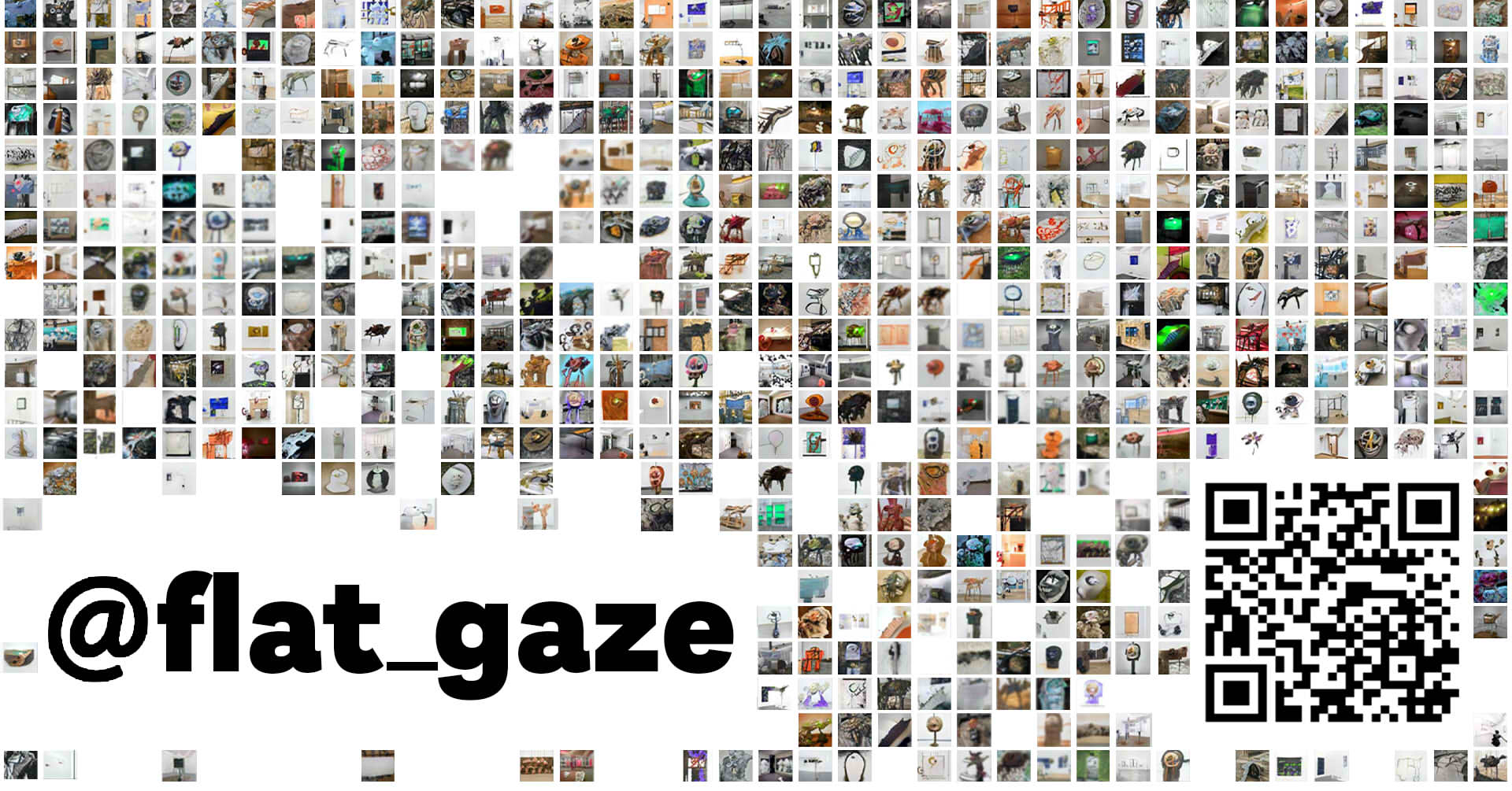With @flat_gaze, Matej Mihevc, a new media artist of the younger generation, explores the specificity of the current state of cultural production after post-internet.
@flat_gaze raises questions about objectivity and meaning, innovation and authorship and the processes of production and dissemination in the arts and the broader cultural sphere, which are mutating at an accelerated rate with the advancement of neural networks and the increasing accessibility of artificial intelligence technologies.
@flat_gaze is embedded in the social media platform Instagram, today’s increasingly relevant art venue, which instead of an economy of value, aura and meaning is shaped by an economy of attention, reach and affect. The project @flat_gaze updates the contemporary figure of the creator of cultural content as a remixer, DJ, programmer or curator of content into a generative and automatised feedback web of consumption and production (of images).
The project includes the Instagram profile @flat_gaze, which follows specific profiles of individuals, art galleries and blogs related to digital, post-internet and contemporary arts that are posting photographic documentation of exhibitions, digital objects and their various intertwinements. The posts from these profiles are automatically aggregated and serve as a database for training the neural network StyleGAN2-ADA. The network learns unsupervised, and every day the automated process chooses random coordinates in the latent space, from which it generates the images that are posted on the @flat_gaze profile.
Thus, during their daily scrolling through Instagram, followers of the profile come across the algorithmically generated images which vividly recapitulate cultural patterns, trends and currents into outlines of objects, spaces and moods. In fact, they are two-dimensional visualisations of the sections of multidimensional categories into which the neural network quantifies cultural production. Thus, they present the human-visible fragments of an otherwise alien and incomprehensible algorithmic “view” of the cultural field.
In this, each image – even though as human followers we attempt to treat it as particular and meaningful because of the unusual semantic combinations – is special precisely in its genericness and (spatial and semantic) depth, which is only a surface effect. The automatised and hyperproductive loop does not communicate, criticise or reveal anything. It merely indifferently generates new affective possibilities for the human consumer and anticipates the algorithmically enriched creative processes of the future.
